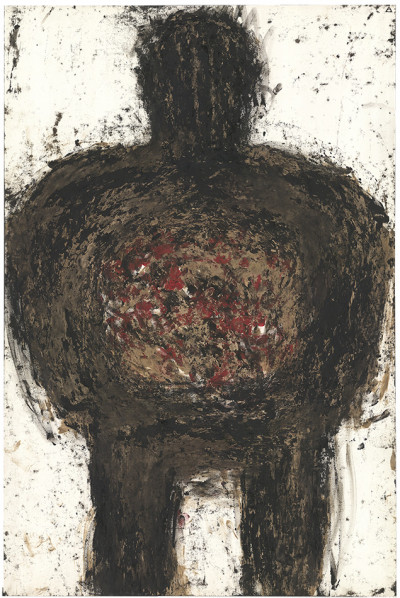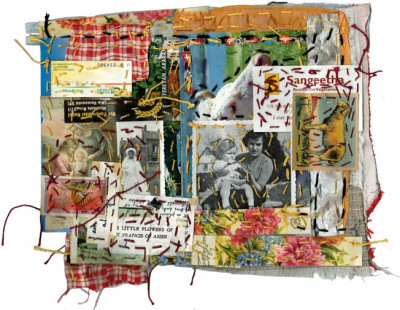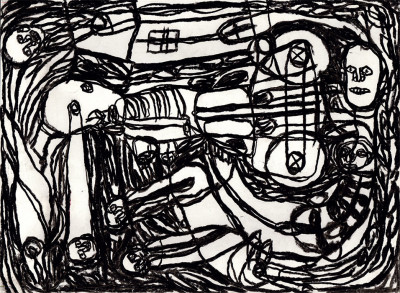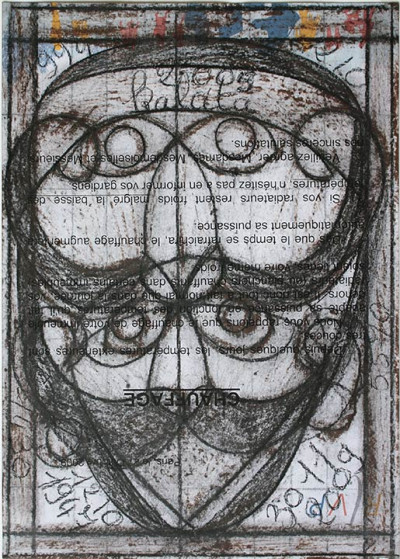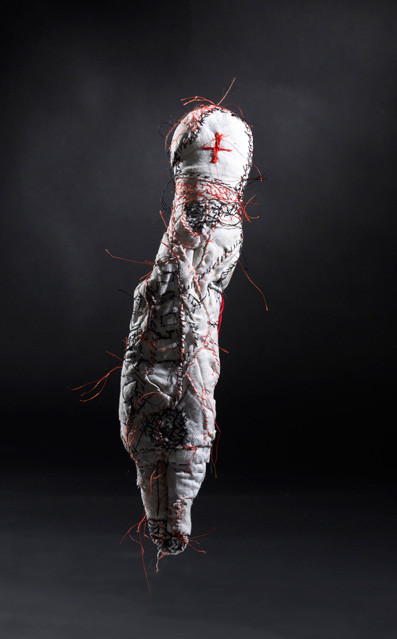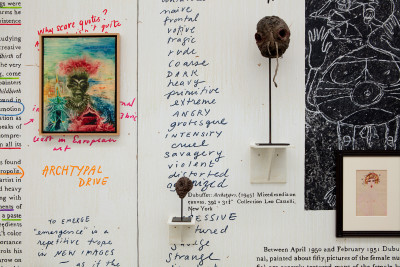Michel Nedjar
He is the most widely exhibited and published living art brut artist, yet the extraordinary trajectory of this Frenchman raises a question that is rarely addressed: that of the impermanence of art brut. Discovered by Jean Dubuffet at a time when he was working on the resurgence of the symbolic body, he allowed himself to become the protean artist we know and who, in his creation, embodies absolute freedom. His work can be found in countless collections, and he was the first artist brut to enter the collections of the Musée national d’art moderne (Pompidou). Exhibited at the Monnaie de Paris, the Albertina Museum and the Mona, Michel Nedjar has been the subject of nine monographic exhibitions.
Michel Nedjar was born in 1947 in Soisy-sous Montmorency (Val d’Oise) to an Ashkenazi mother and a Sephardic father. The third in a family of 7 children, he became passionate about fabric very early on – his father being a tailor –, making dresses for his sisters’ dolls – with which he secretly played – and helping his grandmother sell old rags (Schmatess) at the flea market. As an adolescent, he became painfully aware of the Holocaust, of the history of his family, in large part fallen victim to Nazism: the tragic dolls he then began to make are reminiscent of this. He subsequently went on numerous trips to Asia and Mexico, where he discovered the magical Kachina dolls and the mummies: “They weren’t dead. They had their costumes, their dresses glued to their skin.”
It was upon his return that he made his first dolls (his “soul flesh” series, a pun on the French for “dear ladies”) out of rope, rags and feathers that he would soak in a bath of dirt, dye and blood. Nothing but burnt cadavers and mutilated bodies. Starting in 1980, his creativity extended to drawing, wax and painting. When Dubuffet discovered him and started to collect his dolls, Nedjar was introduced to Art Brut: enthusiastic, he himself began to seek new artists, to collect their works and co-founded – with Madeleine Lommel and Claire Teller – L’Aracine.* Thus, Nedjar entered doubly into the world of Art History, as a scout for art brut, and above all, as an artist. Roger Cardinal dedicated a leading article to him in the Fascicules of Art Brut and more than 20 or so of his works are in the National Museum of Modern Art thanks to the Cordier donation.
He is the art brut artist – even if he no longer really belongs in this category – who has exposed the most over the past 30 years and his work has been the subject of a great number of international publications.
The Museum of Art and History of Judaism (mahJ) devoted an exhibition to him in 2016 and the LAM (Lille Métropole Musée d’art moderne, d’art contemporain et d’art brut ), a retrospective in 2017. The Museum of Art and History of Judaism (mahJ) devoted an exhibition to him in 2016 and the LaM (Lille Metropole Museum of modern art, contemporary art and art brut), a retrospective in 2017. The donation of the L’Aracine collection in 1999 made it possible to create the first museum of art brut in France at the LaM, in Villeneuve d’Ascq.


